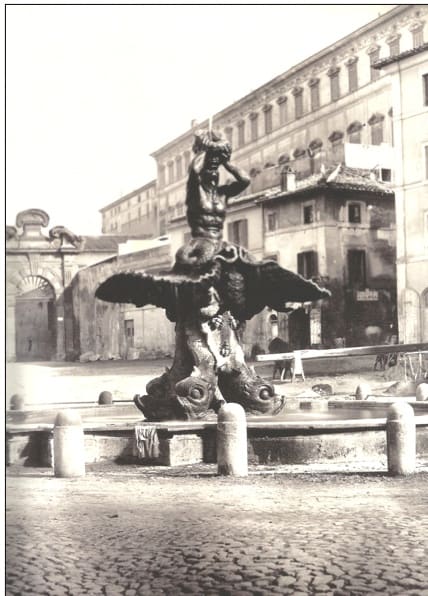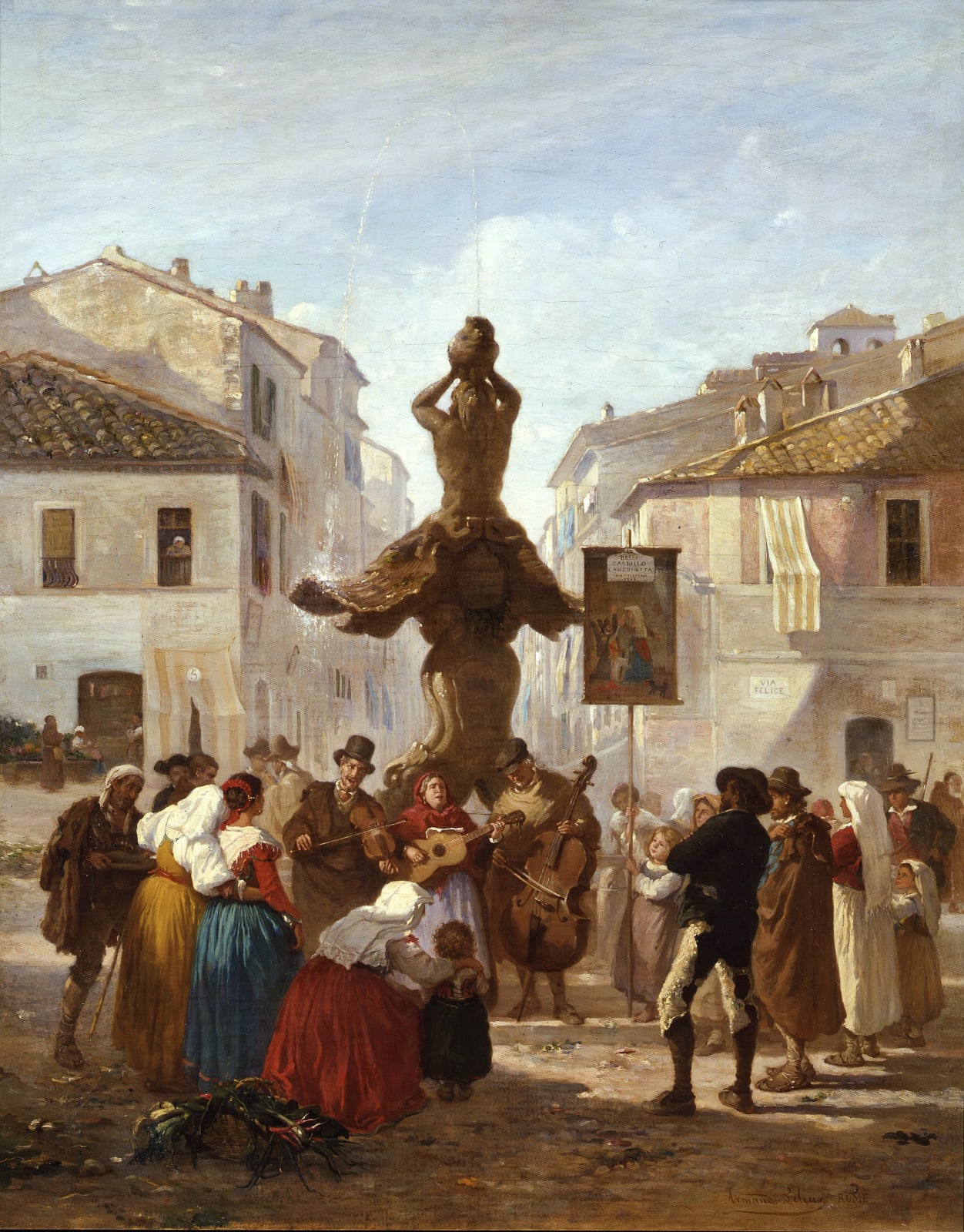Armand Hubert Simon LELEUX 1818 -1885
Further images
The painting depicts piazza Barberini, which at the time flowed into the ancient Via Felice, as written on the marble plaque on the wall of the building to the right. The street was famous for the succession in time of several artists’ studios, and was later named Via Sistina and Via del Tritone.

The Triton fountain in Piazza Barberini, Rome.
The appearance of the square at the time is different from how it looks today: the houses were later demolished due to urban changes of the early Twentieth Century.
The Triton Fountain, designed by Gian Lorenzo Bernini in 1643 and commissioned by Pope Urban VIII, who considered the square in front of the palace as ‘His’, appears in the center of the composition as the focal point of Via del Tritone, which was narrower at the time.
Leleux has depicted some buskers around the fountain while singing 'Il bello cardillo’ (The beauty linnet'), an ancient Neapolitan musical composition, as evinced by the script on the banner held by a child. The year '1862 ', reported there, indicates the probable date of the painting’s realization.
The beauty linnet' is a melody which is still well known, and which was composed around the Seventeenth and Eighteenth Centuries and then spread through a Nineteenth Century transcript. The banner depicts a woman with her head covered in a white cloth as she stabs the soldier kneeling in front of her.
JOIN OUR MAILING LIST
Subscribe to our mailing list in order to receive news on new acquisitions, exhibitions, special previews and more!
* denotes required fields
We will process the personal data you have supplied to communicate with you in accordance with our Privacy Policy. You can unsubscribe or change your preferences at any time by clicking the link in our emails.

